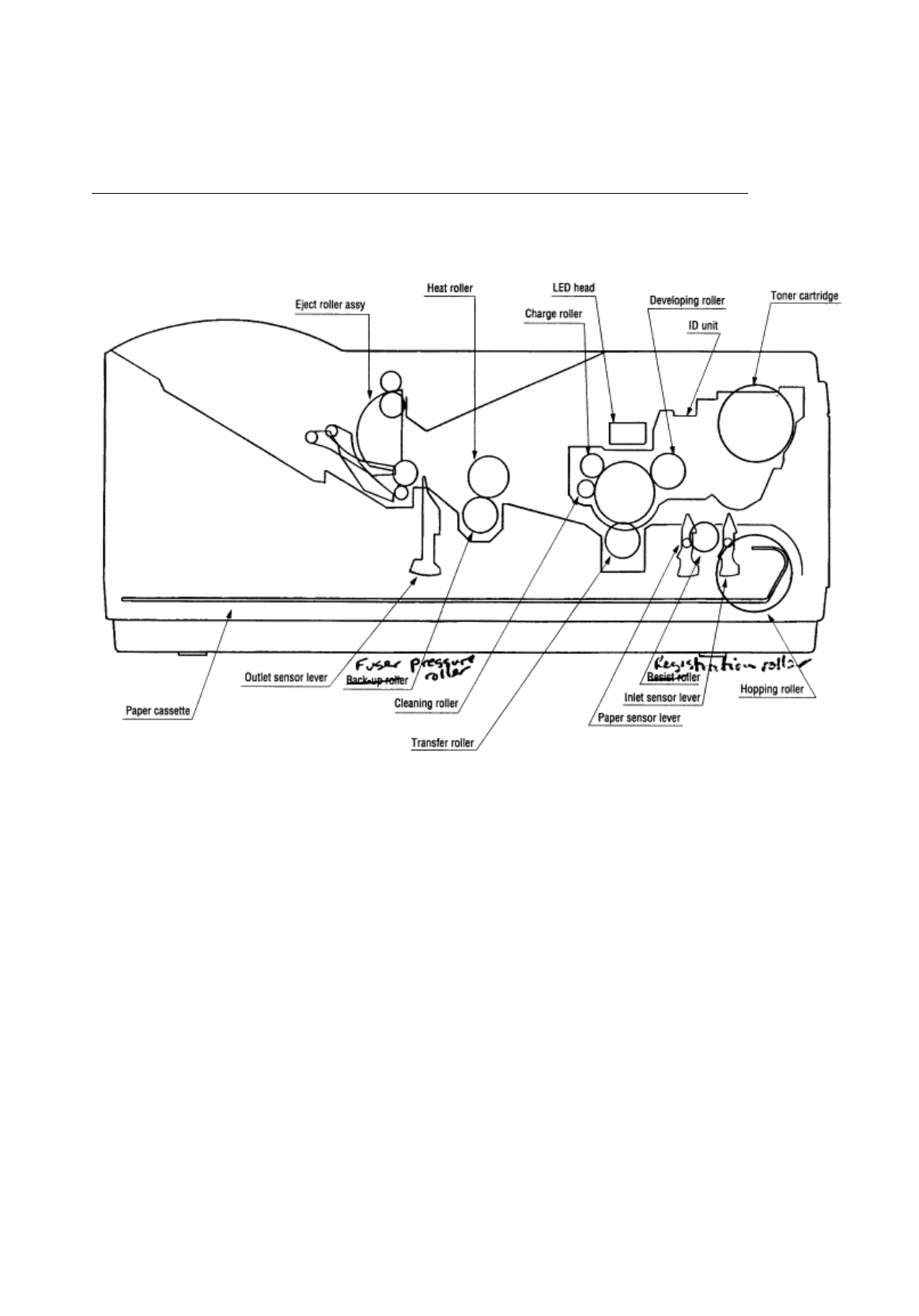
?%2.4 Electrophotographic Process - 2.4.1 Electrophotographic
Process Mechanism
2.4 Electrophotographic Process
2.4.1 Electrophotographic Process Mechanism
This mechanism uses the electrophotographic process to print image data supplied by the control board.
The layout of the electrophotographic process mechanism is shown in Figure 2-6.
Figure 2-6
(1) Image Drum Unit
The image drum unit consists of a light-sensitive drum, a charger, and a developer. The unit forms a
toner image on the sensitive drum, using an electrostatic latent image formed by the LED head.
(2) Registration Motor
The registration motor is a pulse motor of 48 steps/rotation, which is two-phase excited by the signal from
the Main Control PCB. It drives the hopping and registration rollers via two one-way clutches according to
the direction of rotation.
(3) Drum Motor
The drum motor is a pulse motor of 48 steps/rotation, which is two-phase excited by the signal from the
Main Control PCB and is the main motor of this mechanism.
(4) LED Head
Image data for each dot line from the control board is received by the shift register and latch register. The
2560/2496 LEDs are driven to radiate the image data on the image drum.
(5) Fuser
The fuser consists of a heater, a heat roller, a thermistor and a thermostat.
The AC voltage from the power supply board is applied to the heater controlled by the HEATON signal
from the control board. This AC voltage heats the heater. The Main Control PCB monitors the heat roller
temperature via the thermistor, and regulates the heater roller to a predetermined temperature (165°C) by
connecting or disconnecting the AC voltage supply to the heater.
When the temperature of the heater roller rises abnormally, the thermostat of the heater voltage supply
circuit becomes active and cuts the AC voltage supply.
OKI OL600/610ex (96-01-18


















